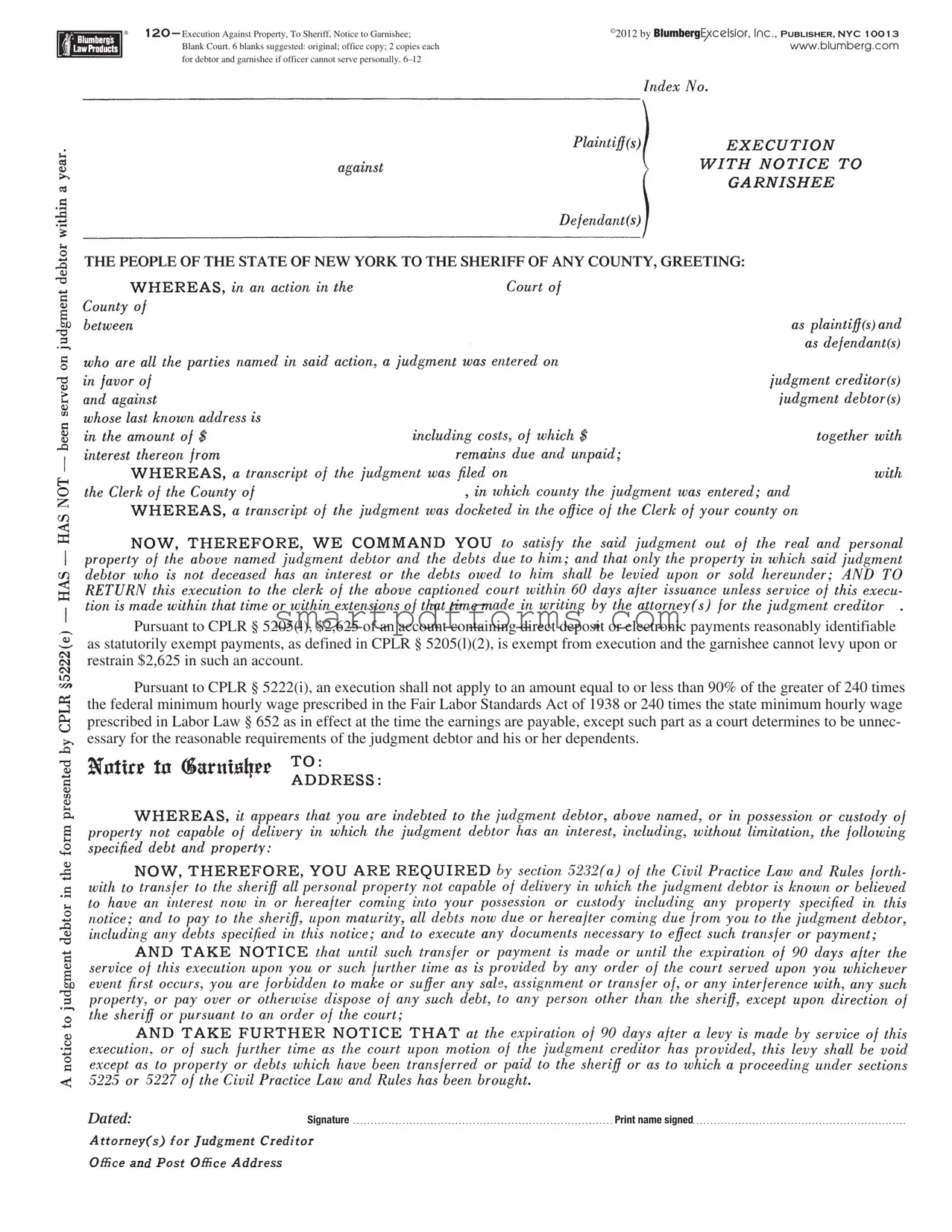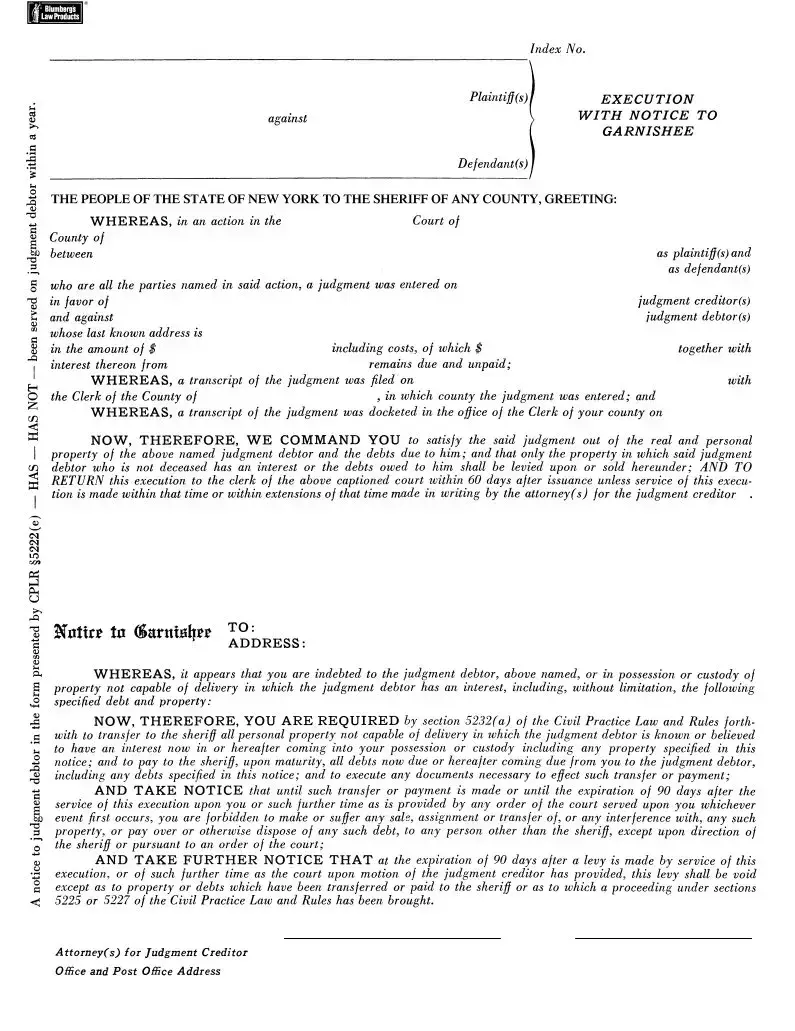Blank Blumberg 120 PDF Template
The Blumberg 120 form, officially titled "Execution Against Property, To Sheriff, Notice to Garnishee," is a crucial legal document utilized primarily within the state of New York to facilitate the process of garnishment or property execution by a sheriff, following a court's judgment. It intricately outlines the process for notifying garnishees—typically banks or employers about the garnishment—and implements specific protections for the debtor, such as exempting a portion of funds from execution under the Civil Practice Law and Rules (CPLR). This form serves as a bridge between judgment creditors, the sheriff's office, garnishees, and debtors, aiming to ensure a lawful and streamlined execution against property deemed non-exempt.
For individuals or legal entities navigating the complexities of executing a judgment, understanding and accurately completing the Blumberg 120 form is essential. Click the button below to get detailed assistance with filling out the form.


